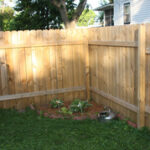Marl soil is one of the two most predominant soils in South Florida. If you have ever tried to dig a hole and run up on something that looks like cement mixed with shell, you have marl in your yard. Unfortunately, most homes built after 1989 have lots that are filled with marl, because it forms a stable base for building. While it may seem impossible that anything could grow in this soil, that isn’t so. With the proper amendments, most plants can grow quite well in the marl of South Florida.
What is Marl?
South Florida sits on a base of limestone. Marl is a base soil that is mostly limestone and shell mixed with sand. Limestone + sand = concrete. Marl sets up very hard, like concrete, but it is not impermeable to water, making it the soil of choice for building up low lying lots.
Contractors usually only put a shallow layer of 3-6″ of topsoil down to get the sod to grow, and everything below that is fill dirt. While planting in this rock-hard soil may seem impossible, there is a method that, while somewhat time consuming, is very effective at turning marl into a viable planting medium.
Working with Marl
I’ve planted many a plant in marl, and have developed a method that works in a vast majority of cases.
What you’ll need:
- A strong shovel
- A water hose
- Dishwashing liquid (not Dawn)
- Composted manure
- Organic Matter – this can be anything from leaves to compost.
- Epsom Salts
When dealing with marl, soap and water are your best friends.
To plant vegetables in marl, you will need to dig either a hole 18 inches in diameter or a trench 18 inches wide. Both of these should be at least 12 inches deep.
To plant ornamentals in marl, you will need to dig a hole 3 times the diameter of your pot, that’s a 24″ diameter hole for a 1 gallon pot, and a 30″ diameter hole for a 3 gallon pot. The depth of the hole should be 3″ more than the height of the rootball..
This will allow the roots to have room to spread. If you do not do this, your plant will begin to decline and die within a year when the roots hit the marl.
How to Dig in Marl
Digging in marl is a process. This is where the soap and water comes in.
First, you squirt dishwashing liquid on the ground, and sprinkle it with water until it starts soaking in. The dishwashing liquid acts as a surfactant, breaking the surface tension of the soil and allowing the water to penetrate. Then you will be able to dig a small hole, fill it with water, and let the water sink in. You will now be able to dig out to where the water soaked into the marl. Why is this so? Because water breaks the chemical bonds between the limestone and the sand in the marl..
This is a “rinse and repeat” operation. Every time you dig a larger hole, you fill it with water, let it sink in, and repeat the process until you have dug out the 18″w x 12″d area you want. Time consuming? Yes, but if you have a yard built up with marl, this is your only choice, other than having someone with a backhoe do it for you.
Planting in Marl
You may think you don’t want to put the marl back into your hole, but you are wrong. As horrible as it seems, marl is full of minerals such as silica and calcium. You need to add at least 50% organic matter to your marl. This is done by layering. First, you will put 3 inches of your composted manure into the bottom of the hole to feed the plant during the first four weeks when it is getting established. NEVER put chemical fertilizer into a hole when planting, as it will burn the roots.
Then place your plant and layer the marl and organic matter in 2″ layers. After every two layers, fill the hole with water to keep it from developing air pockets, and to also make sure your organic matter gets completely saturated. Stop when you are within 1″ of the top of your hole. When planting ornamentals, the top of the root ball should be level with the top of the hole.
When you have filled to within 1 inch of the top of the hole, sprinkle epsom salts around the top of the hole (1/4 cup for 1 gallon or smaller, 1 cup for 3 gallon or larger) and water in. This helps the roots establish themselves better. Mulch your plant to retain moisture, and you are done.
As the roots spread out past the planting hole, keep an eye out for signs of nutrient deficiency. You may have to dig a 3-inch wide, 6-inch deep trench around the plant starting at the drip line and working outward and fill it with straight organic matter to give the roots room to spread. Not all plants will require this further amendment, in fact, certain native plants and trees will usually adjust to growing in the marl and do quite well.
Sources:
Personal knowledge and experience
Calcareous Soils of Miami-Dade County
Concentrations of P,K,Al, Fe, Mn, Cu, Zn, and As in Marl Soils from South Florida





